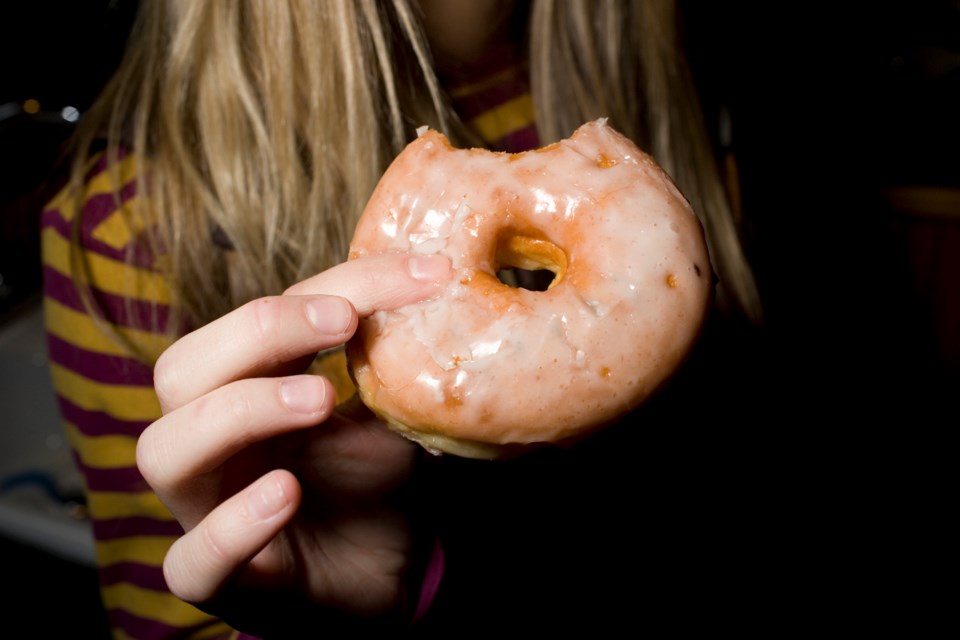The importance of healthy nutrition in children's development has the ministries of health and education updating school guidelines to eliminate as much sodium, fat and sugar as possible in food kids eat at school.
But some are wondering if the new restrictions are going too far, especially for "celebratory" foods like frozen treats, doughnuts, home-baked cookies and hot dogs.
"Who doesn’t have a core memory somewhere that involves pizza or cupcake day or having a freezie or ice cream treat on a warm summer day at a school event," asked one parent on the Coquitlam Community Group Facebook page.
"It’s going way overboard with nutrition rules for foods in schools," suggested another.
Parents, school groups, administrators and school food sellers are being surveyed about the food guidelines, which though voluntary, would usher in a "gold standard" of the types of foods that could be sold or offered in cafeterias, classrooms, celebrations and fundraisers.
Everything from fruit juices, milk products, baked goods, meals and snacks is being scrutinized and either encouraged or discouraged, depending on their content.
A student would not be allowed to bring a homemade cake or cookies to an event, but foods made from scratch that include lots of vegetables or whole grains and are low in saturated fat and sodium are encouraged.
Using a two-step decision making process, adults would be asked to consider the health and nutrition value of the food before allowing it to be distributed to students.
STIGMATIZING FOODS
One registered dietitian who works with clients across Metro Vancouver, including the Tri-Cities, says the new food guide, while well meaning, lacks "balance" in disallowing foods that create enjoyment, especially in social settings.
"Food is more than just nutrition. Food is social, cultural, memories, comfort, and so much more than nutrition," said Katie Bartel, a New Westminster-based dietitian with a son in elementary school.
In its justification, the new food guide acknowledges that food programs provide many of the meals, snacks and beverages students consume in a day and recommends they be nutritious to support student "learning, mental well-being, and healthy growth and development."
But Bartel said the guidelines could create anxiety, especially among those facing financial or time constrains, while creating unrealistic expectations for children.
At her son's school, attempts were made to introduce a healthy food program, but it was eventually altered to provide more typical kid-preferred options.
"They realized the kids weren’t eating their super healthy foods so it went back to foods that kids more gravitate towards."
But her biggest concern is that creating a category of foods to be avoided could make it harder for some to choose healthy alternatives, and possibly lead to unhealthy relationships with food later in life.
"It’s perpetuating the messaging of good versus bad food," Bartel said.
Growing up with type one diabetes, Bartel said said it can be stressful to constantly monitor food intake, and while celebrations often involve food which may not always be healthy, there's a positive dynamic in sharing food socially that can't be measured by nutrition content alone.
"You are constantly calculating what is the food going to do to me, and, if you are constantly thinking about negative impacts of foods, it’s gong to take the joy out of food," she said.
Bartel suggests schools should make it a priority to have healthy snacks, such as fruits and vegetables, in the classroom at all time.
Meanwhile, the new guidelines are being discussed now and a survey is available until April 30.
Under the current guidelines, foods and beverages are organized into three categories (sell most, sell sometimes, do not sell). The proposed 2022 Guidelines would instead categorize foods and beverages into two categories – foods to offer, serve or sell; and foods to avoid.
They would apply to food sold in vending machines and cafeterias, as well as fundraisers, events and celebrations, making the guidelines more far-reaching than those implemented in 2013.
However, the new guidelines are in alignment with Canada’s food guide.





